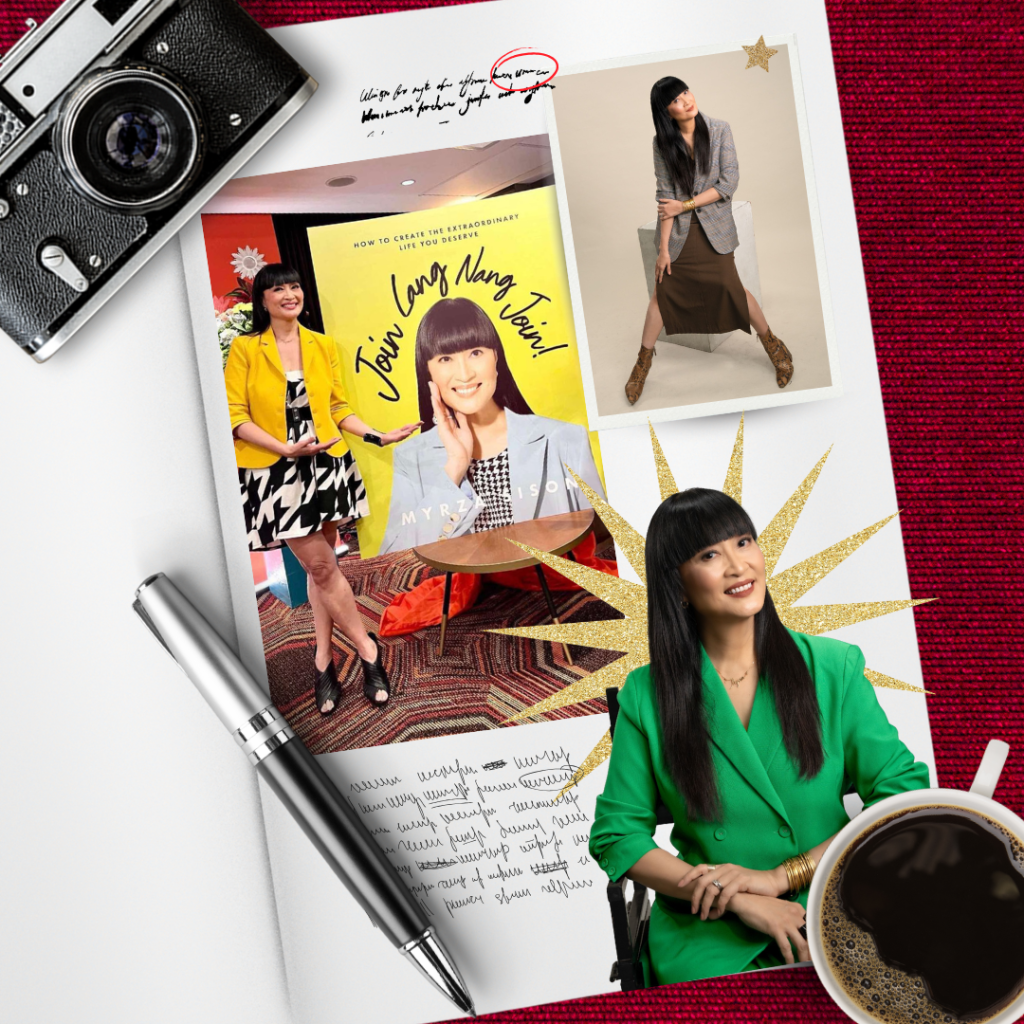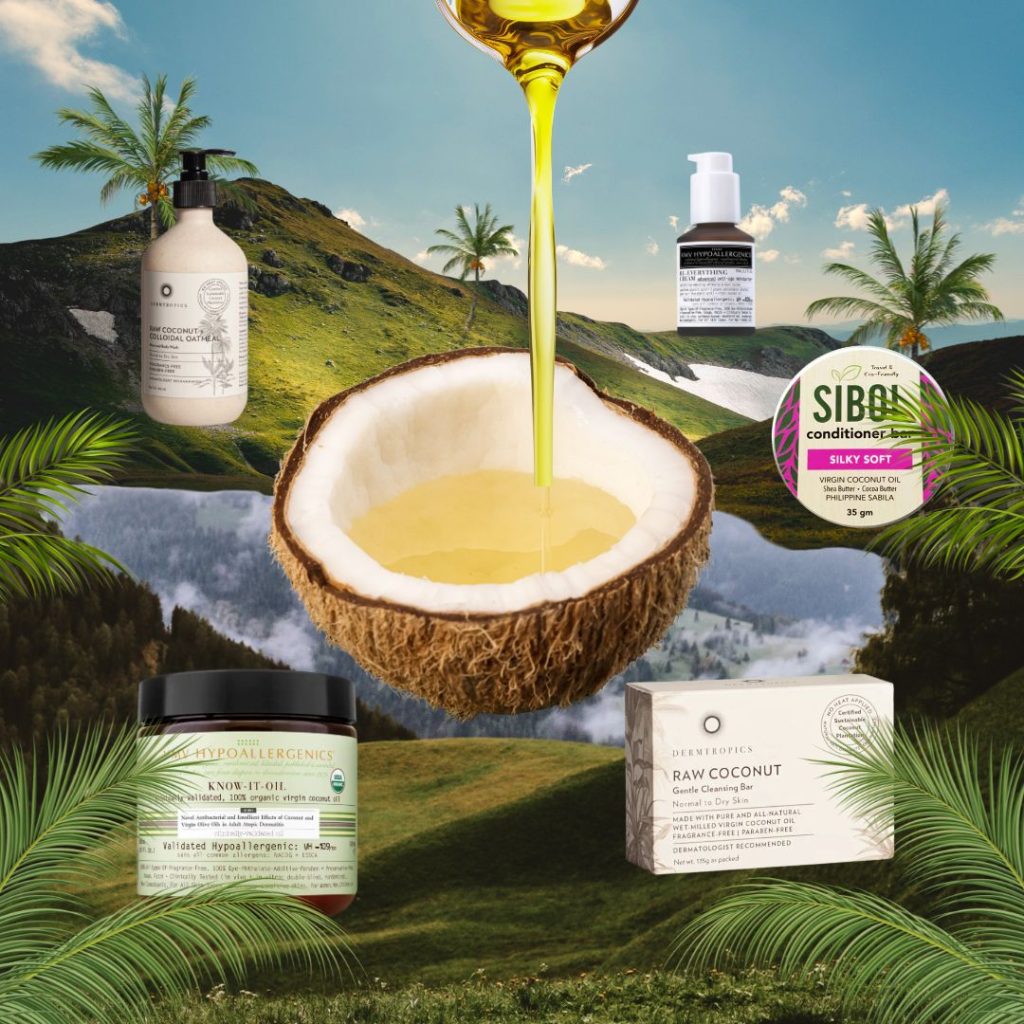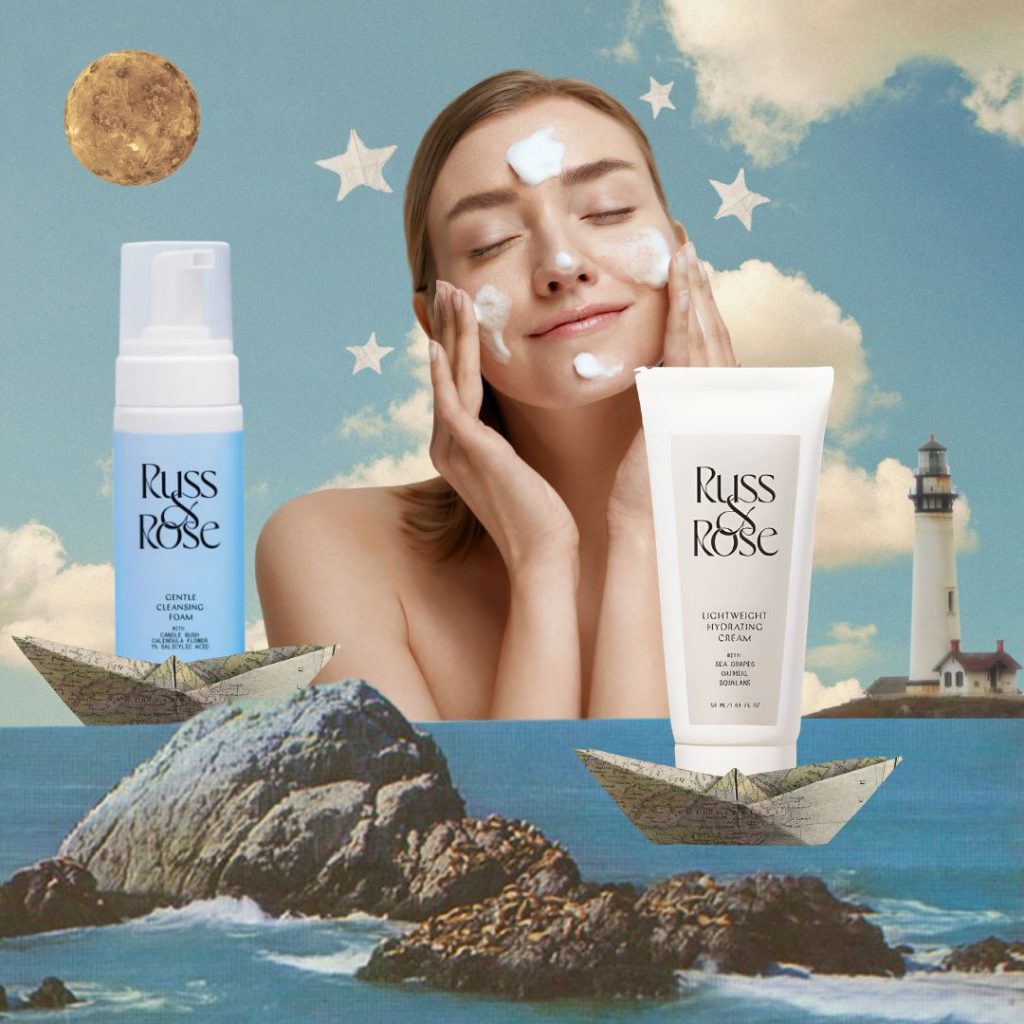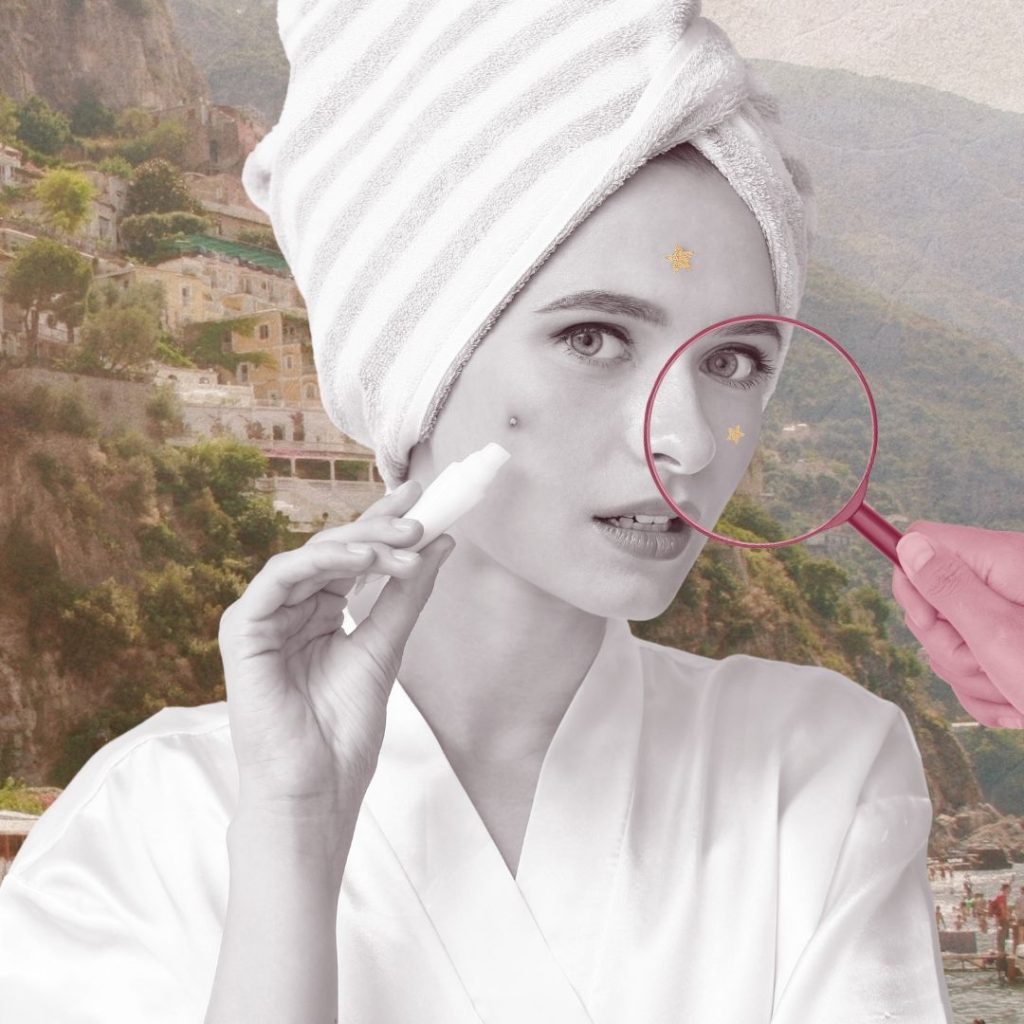I heard her before I saw her: the staccato of high heels against a linoleum floor. I was eighteen, a college junior interning for a lifestyle website under Summit Media, typing out stories from magazines to repurpose online. In the cubicle, hunched over my laptop, I was every bit the insecure, out-of-place greenhorn. The clickety-clack stopped. She paused in our aisle and called out a bright, ringing hello.
Myrza Sison rattled me that first time. She, long and lean, in strappy black platforms, and bangs so blunt they were strangely sharp, and I, clothes smelling of school and neck-deep in outdated glossies. Myrza was not just the website’s editor-in-chief but also the company’s editorial director, and she scared me in the same way a child is wary of any tall, strange, self-possessed grown-up.
In the halls of Summit, Myrza’s origin story is something of a myth, constantly repeated and referred to like gospel: the mathematician-turned-model who eventually became Preview’s first fashion editor (and Cosmopolitan Philippines’ first editor-in-chief). Her employee number was three, one of the trio who pioneered the company. She was a pillar, if not the institution.
Two years later, when I officially joined Summit, I experienced her legend firsthand. On my first day, she began what would become a ritual: 5 a.m. emails filled with current events I was to rewrite into lifestyle-friendly digests. She sent me to launches and interviews, told me to make lists before listicles became fashionable, and had me compile photos of the “It” crowd’s parties. Despite the demands of her multiple roles, she read everything, every caption, every comma, reminding me that “watch for” wasn’t the same as “watch out for.” Trust me: it was much more rewarding than it sounds.
At some point, I saw her slip off her heels and walk barefoot around the office. Somehow, the sheen cracked a little. She was still the Myrza but also…just Myrza.
Working with the Myrza wasn’t easy. It was—and she will be reading this—brutally tough. Not because she buried us in deadlines, but because she carried expectation like oxygen. She was always the first one in and last one out. She pulled all-nighters alongside interns, checked every idea, offered literally the clothes off her back during shoots. She embodied the standard she demanded, and it was almost humiliating not to keep up. The cruel twist was her kindness; it made disappointing her sting even more. She just had an aura of excellence and, fortunate for the people around her, it rubbed off.
When Myrza retired from editorial life in 2019, she didn’t sit on her hands and count the days. During the pandemic, she reinvented herself once more: becoming an executive coach and starting her own podcast. And then earlier this year, she returned to Summit Media as Editor-at-Large, poised to mentor and empower the next generation of editorial leaders. Now, the legend herself sits down with us to talk about her never-ending, always-evolving career, and revealed what, if anything, would make her stop.
The Beauty Edit: From a statistics degree to an award-winning writer, what did numbers reveal to you that words could not and vice versa?
Myrza Sison: I went to a Montessori school for grade school, where everyone seemed to come out a good writer. They taught language so well that I fell in love with words. Then I went to Manila Science High School, where I had to think scientifically and mathematically. Writing was my first love, but the numbers gave me structure and discipline. That mix was perfect for journalism because it taught me to write in a logical way. I also instinctively see patterns in data, events, or people’s stories, which helps when finding things to write about.
People kept telling me, ‘Oh you’re good at math, you should be a programmer.’ But that also made me realize that just because you’re good at something doesn’t mean it’s what you should do.
How did modeling come into the mix?
I had burnout. My first job after my Statistics degree was as a computer programmer at SGV, and I was so stressed I’d actually dream in code. If I had an endless loop in my program, I’d dream of the solution and wake up knowing the fix. Eventually, I craved work I didn’t have to take home in my head. That’s what modeling gave me. It felt like artistic self-expression, and for the first time, I could sleep without worrying about the next day’s work. I had studied ballet as a kid, so I already loved expressing myself physically, even if I had no (dancing) talent. Modeling became a way to do that. In my mind, I wasn’t just a static subject. I was a co-creator, a vessel for the photographer or director’s vision.
Out of the many careers you’ve had, including coaching now, which do you think had the biggest impact in terms of who you are?
I can’t really choose because each career fed into the next. If I hadn’t modeled, I wouldn’t have been as credible or effective as a fashion editor. Being immersed in clothes, designers, and the industry gave me that grounding. And if I’d only studied journalism, I don’t think I could’ve written the way Preview needed. Every reinvention built on the last. During the pandemic, when I trained as an executive coach, I struggled with imposter syndrome, thinking, “I’m just a newbie coach.” However, my mentor reminded me I wasn’t starting from zero. I was bringing 25 years of media experience and layering new skills onto it. That’s been the through-line: not jumping careers randomly, but letting each chapter enhance the next, making me more complete in every incarnation.
In your very colorful career, when did you first learn the difference between confidence and self-worth?
When you’re a model, confidence means looking self-assured. You’re presenting clothes and carrying yourself with poise. But later, I realized that’s surface-level. True confidence comes from self-worth: how you see yourself when no one’s watching. You can look confident yet feel insecure inside if you haven’t done the inner work. Self-worth is deeper, longer-lasting, and when you build that, real confidence follows naturally.
What are your thoughts on faking it till you make it?
‘Fake it till you make it’ gets a bad rap because it sounds like you’re pretending. Something I used to espouse way back when I would write my Cosmo editor’s note is a Leo Tolstoy quote: ‘Act as if you are, and you will become such.’
It’s not about faking; it’s about practicing the habits and mindset of who you want to become. If you want to be an athlete, act as if you already are: wake up early, train, commit to the discipline. Over time, the practice catches up to the vision, and you grow into it. It’s not inauthentic. It’s rehearsing your future self until it’s real.
Have you ever faked it till you made it yourself?
How does a computer programmer act as if she’s a model? Programmers before could only work in banks or the government. So, I actually chose to work in SGV because it didn’t have a uniform! I cut my hair short, wore giant earrings that my officemates described as ‘gongs,’ and showed up in micro-minis that made senior partners ask if I’d forgotten my skirt. I was already expressing myself through fashion, and I knew I was in the wrong industry. I watched Style with Elsa Klensch every Saturday night, then I’d tape a straight line on the floor of my house and practice walking in heels, copying supermodel Anna Bayle from VHS recordings.
It was the same when I wanted to host a talk show after retiring. The pandemic forced everything online, and suddenly everyone was livestreaming. I knew nothing about the tech, but I bought a ring light, learned Zoom and StreamYard, and started, even if only 20 people watched, most of them my mom’s friends. But by pretending, learning, and practicing, I became what I aspired to be. That’s the best example of acting as if I were, and then I became.
“In my 20s, ambition was about proving myself—to my parents, to the industry, to everyone who thought I was just a model-turned-editor. But as I’ve gotten older, it’s less about proving anything and more about fulfillment. I want to find meaning for myself and use what I’ve gained to help others.”—Myrza Sison
What do you know about ambition that you didn’t know when you were 25 or even younger, like back when you were younger? Does it ever end?
We shouldn’t be ashamed of ambition. Everyone should have it. But ambition doesn’t have to mean the old cutthroat version of racing to be the first, the youngest, or the fastest. For me, it’s no longer a finish line but a compass. In my 20s, ambition was about proving myself—to my parents, to the industry, to everyone who thought I was just a model-turned-editor. But as I’ve gotten older, it’s less about proving anything and more about fulfillment. I want to find meaning for myself and use what I’ve gained to help others.
Can you tell us about your constant reinvention? Like… why?
I think everyone is on a quest for happiness and fulfillment. For me, it wasn’t about having a rigid plan. I didn’t plan to be a programmer, then model, then editor, then coach, then creator. It was more like riding the tide and steering as best I could. As a child, I loved writing, but my parents pushed me into programming. At 12, what did I know? So I went with the flow, always asking myself: ‘Am I still happy doing this? Do I still love creating? Or is it time to evolve?’
That mindset kept me in Summit for 25 years, to everyone’s surprise, including Liza’s (Gokongwei), who thought I’d last two months. But I stayed because I found joy and meaning in the work. Every morning I asked myself, ‘Would I rather be doing something else?’ And the answer was always no.
Things shifted when my best friend, JR Isaac, died at 48 in 2016. It was my first real brush with mortality, and I thought, ‘Oh my god, life really can end anytime, and there’s still so much I want to do.’ I wanted to write a book, to host, to explore new paths. But I knew I couldn’t do that while running Summit. So I carefully planned my retirement—not from life, but from corporate life—and gave myself the space to lead other lives I’d been putting off.
What has failure taught you that success never could? Caveat: Have you ever even failed?
I’ve made wrong calls as an editor. Maybe I micromanaged too much, maybe not everyone under me was happy. Looking back, there are things I could have done differently. But as cheesy as it sounds, I’m grateful for the failures. Failure is the best feedback. You learn faster from it than from quiet success.
That lesson became even clearer when I shifted to being a creator. Suddenly, I was a one-woman show in isolation. Every livestream was a chance to fail: the tech would break down, my spiel would fall flat, my hands would flail, or my hosting would just suck. Even with only 20 viewers, it was excruciatingly visible. But once people have already seen you at your most cringe-worthy, you realize, ‘So what?’ There’s nowhere to go but up.
I even took two acting workshops with the late, great Cherie Gil to build confidence as a host. She gave us classic Tagalog scripts to perform, and in one exercise, I fumbled so badly she stopped me mid-performance. She said, ‘Forget the role. Forget the script. Act like a monkey.’ Then a snake. Then a pig. Make the sounds, embody the creature. It was right there on Zoom, in front of Cherie Gil and actresses like Chyna Ortaleza and Barbie Forteza. It was mortifying. But I thought, if I can make a fool of myself in front of that room, hosting a podcast will be a cinch.
When you experience what you ultimately fear, everything will be easy from there. It’s better than not failing, when you’re just steady, slowly climbing, but so paranoid that something bad’s going to happen. It’s better to take the fall while you can, so you can rise and get back on your feet. Failure is a shortcut through the learning curve because you learn faster.
How do you know when it’s time to leave a phase of your life?
When I was a programmer, I spent two years just waiting for my contract to end because the burning desire to model was so loud I couldn’t ignore it anymore. I knew in my body it was time. I wasn’t even tempted to wait for a promotion. You don’t start modeling at 28; you start when you’re 22 and the opportunity strikes. So I jumped.
Since I’d sacrificed so much to try modeling, I made a bucket list: I wanted to model internationally. After two years in Manila, I tried my luck across Asia. Maybe Paris, Milan, New York. Why not, right? But back then, modeling was brutally ageist. I started at 21, which already felt late, and by 24 in Singapore, me and the other 24-year-olds were treated like grandmothers. We lied about our age constantly. I’d say I was 19 and acted as juvenile as possible just to book jobs. Eventually, I was told I was too short for Paris, Milan, New York. That stung, but it was also grounding advice: take the opportunity as far as it can go, but be realistic, too.
When I came home, I already felt the itch to pivot. What else did I love? Writing. So I floated a rumor around the fashion industry: ‘Hey, I’m a writer.’ I had no proof, but Rico and Tina Ocampo of Sari-Sari Store gave me my first break. They said, ‘Since you wrote the press release, can you model na rin since you saw the clothes na?’ And I did. One of those press releases landed on Millet Mananquil’s desk at the Philippine Star. She asked, ‘Who wrote this?’ and suddenly, I was assigned fashion articles. That was my first real foray into writing.
How do you keep going every day? Like, what do you tell yourself every day? Is it still ‘Am I still happy’?
I ask, ‘What do I need to do today?’ But the general mindset is just go, go, go. Show up. Just show up. You said yes, you committed. So, deliver and just show up.
I guess that’s what it is. It’s hard to do it, but otherwise, I’m still excited to do what I need to do for the day, even if things get so hectic. Join lang nang join (just keep joining), though sometimes I over-commit, and so I get tired.
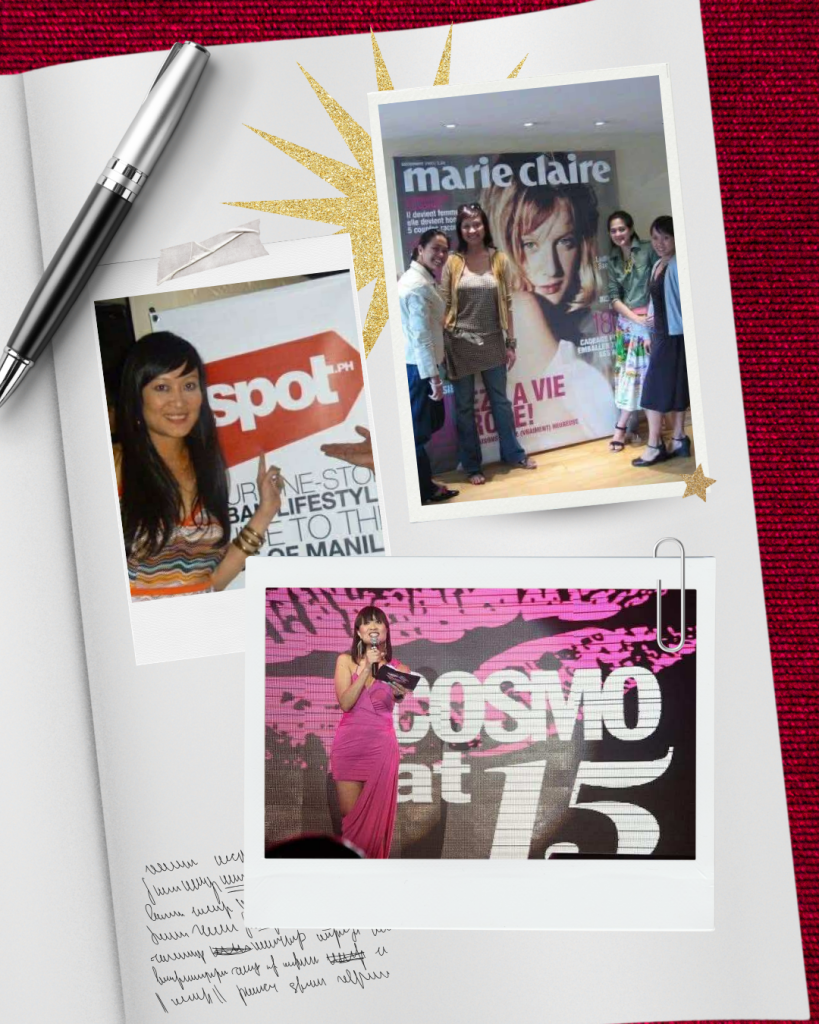
You’re famous for your ‘go lang ng go,’ ‘try lang ng try’ (keep going, keep trying) attitude. What do you say no to?
The things I say yes to are either aligned with my goals or they enhance my life experience. I really do pick my battles and my opportunities. If something isn’t aligned with the direction I want, or it doesn’t excite me, I conserve my energy and mental bandwidth.
When I had just retired from Summit, I got so many offers to do the same thing: to edit elsewhere, to run another magazine. But I had to remind myself: I didn’t retire just to do the same job in a different building. I retired because I wanted to explore new things. So I said no.
But when Summit invited me back, I said yes because it wasn’t the same role. This time, it was coaching, mentoring, and consultancy, which brings together everything I’ve learned. Who better to coach than editors, whose challenges I know inside out? It felt like the most natural next chapter, applying my experience in a way that still allowed me to represent Summit, which I’ve always been proud of. In the end, I only say yes if it expands who I am, or makes me more of who I already am.
What question do you wish more people asked themselves before chasing success?
What’s the definition of the contest you’re chasing? Is it really yours or is it your family’s, society’s, or your classmates’? Are you falling into the comparison trap, trying to keep up with your peers, or proving something at class reunions? You could save yourself years of chasing dreams that were never yours to begin with.
This is where honest self-awareness comes in. You need to separate what people expect from you versus what’s truly important to you. I still get so many messages from people saying, ‘All my friends are married with kids, and I’m single. What’s wrong with me?’ And I always tell them: nothing’s wrong. Your path and your timetable are not lesser or greater—they’re just different. It’s not bad to want what others have, but make sure it’s because you want it, not because you feel pressured to want it.
How are you able to overcome that yourself?
One of my most successful reels was about how I deal with comments like, ‘Why don’t you have kids?’ Honestly, it goes back to how I grew up. My parents owned Book Sale, so I had access to endless magazines and books. Western women’s magazines, feminist writing. I got exposed early to the idea that there are many ways to live a life, not just the traditional one.
So by 21, I already knew I wanted to be child-free. That realization was liberating. It meant I didn’t have to defend myself every time someone made a comment, because I knew exactly where I stood. And I also knew that most people who asked those questions were speaking from a more traditional, conformist perspective. They weren’t going to see my side anyway, so why waste energy trying to make them?
The truth is, the earlier you make peace with your decisions, the less conflict you’ll have. You don’t need to defend your choices or feel like you’re ‘falling behind.’ You’re simply walking a different path, and that’s perfectly valid.
Is there a lesson you resisted the longest, but finally surrendered to, or finally decided to go and go?
Not really resisted, but I changed my mind about it. When I was at Summit, I hated hearing ‘pwede na ’yan’ (that’s good enough) and ‘bahala na’ (come what may). To me, they sounded like having low standards or leaving things to chance. But when I became a solo creator, my perfectionism betrayed me. Suddenly, I was the video department, the scriptwriter, the host. If I waited until everything was perfect—my lighting, my script, even my bangs—I’d never post anything. I realized that if I wanted to be consistent, I had to learn to love ‘pwede na ’yan’ and ‘bahala na.’ Not as excuses, but as survival skills.
“I still strive for excellence, but now I know the difference between excellence and perfectionism: One moves you forward, the other keeps you stuck.”
People aren’t looking for glossy, high-production content every time. They just want your message today. Sometimes 85 percent really is good enough; you can always improve later. Otherwise, perfectionism will paralyze you. I still strive for excellence, but now I know the difference between excellence and perfectionism: one moves you forward, the other keeps you stuck.
How do you measure a good life?
For me, a good life is measured by health, love, joy, and impact. When I shifted into asking, ‘How can what I say or create help others?’ it became easier to move forward.
One of the most touching messages I ever got was from someone who told me that during the pandemic, she was estranged from her family and spent a year feeling alone. She said tuning into my humble live streams three times a week at 5 p.m. made her feel like I was in her living room, like someone cared. She told me I ‘saved her life’ because it kept her sane. That was impact.
If you’ve touched even one person, then your life has already been meaningful. It’s just like that gasgas (overused) Lady Gaga quote: ‘There can be 100 people in a room and 99 don’t believe in you, but just one does—and that can change your life.’
Does success have an age limit?
I’m living proof it doesn’t. At 25, success was about proving myself; at 50, it’s about being myself. If you reach 50 and still don’t feel like yourself, maybe that’s the real failure.
I won my first Palanca at 39, got married at 42 (not that marriage is a measure of success), got into the UP National Writers Workshop at 57, and I’m publishing my first book at 58. You can do what you want, at any age—there’s no deadline on fulfillment.
Questions and answers have been edited for brevity and clarity.

